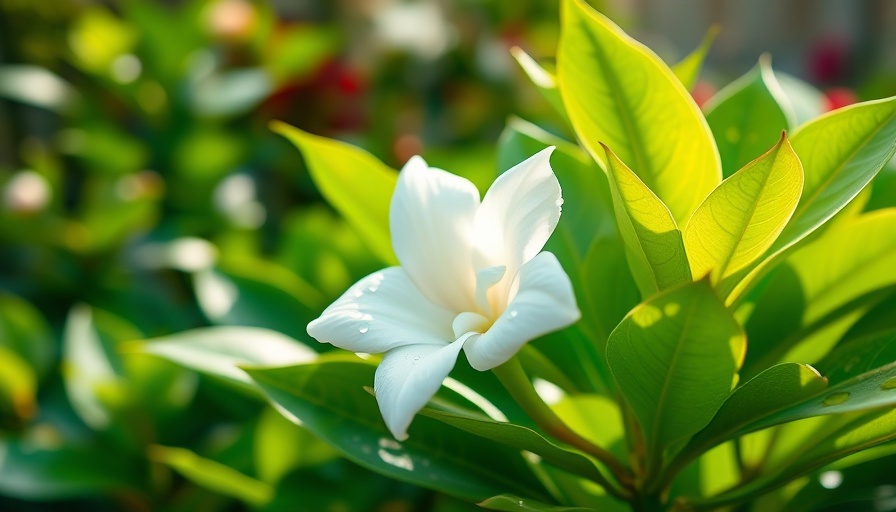
Discover the Elegance of Gardenias in Your Garden
For many, the delicate aroma of gardenias evokes nostalgia, transporting us back to cherished moments spent outdoors. The beauty and fragrance of Gardenia jasminoides, known colloquially as 'Heaven Scent', is undeniably enchanting, making it a coveted addition to any garden. This timeless plant thrives in warm climates and is especially popular in the southern United States, but their successful cultivation does come with specific challenges.
The Allure of Gardenias
Gardenias are not merely ornamental; they are a sensory experience. Their glossy leaves and creamy-white flowers bloom with intoxicating scents, making them a favorite among garden enthusiasts. If you're considering adding these gems to your garden, it's essential to understand their unique needs. Originally hailing from the tropical and subtropical regions of Africa, Asia, and Australia, gardenias prefer humid conditions and warm environments. When placed appropriately—such as near a wall that reflects heat—they can flourish and display their signature blooms.
Essential Care Tips for Thriving Gardenias
While gardenias have a reputation for being finicky, proper care can lead to stunning results. First, consider the placement: they thrive in partial shade but require enough light to produce buds. If you’re purchasing a new plant, opt for one without visible buds. This approach minimizes the chances of premature bud drop, a common problem that arises when the plant is stressed by environmental changes. Established gardenias can also drop buds if they lack sufficient sunlight or moisture—keep this in mind throughout the growing season.
Understanding Nutritional Needs
One of the most common concerns among gardenia growers is yellowing leaves, often indicative of chlorosis due to iron deficiency or root rot. A timely remedy involves administering a liquid chelated iron solution, which helps restore the vibrant green color to your plant. This is crucial knowledge for gardeners; recognizing and addressing nutritional deficiencies promptly can mean the difference between a thriving plant and a struggling one.
Timing is Everything: Choosing the Right Season to Plant
The success of your gardenia also hinges on timing. The ideal seasons for planting are spring and fall when temperatures moderate. This careful scheduling allows the plant to acclimate without the stress of extreme conditions. If you’re planting in the ground, be sure to test the soil pH, aiming for a slightly acidic range, which gardenias favor.
Cultural Influences and the Charm of Gardenias
The cultural significance of gardenias transcends mere aesthetics. In various cultures, they symbolize purity and sweetness, often featured in weddings and celebrations due to their romantic fragrance. This emotional ties to gardenias can evoke a deeper appreciation for these plants, reminding us that our choices in gardening can have implications beyond our yards.
Creating a Robust Gardenia Planting Strategy
Embarking on your journey with gardenias requires a strategic mindset. Start with selecting the right variety suited for your climate, ideally those acclaimed for resilience and fragrance. Incorporate organic matter into your soil to improve drainage and enhance nutrient availability. Furthermore, regular pruning not only encourages denser blooms but also helps maintain the plant’s shape and health.
Exploring Alternative Plant Choices
If the fuss of gardenias seems daunting, consider alternative plants that offer similar beauty with lower maintenance. Plants like jasmine or magnolias can provide fragrant blooms while being easier to cultivate, depending on your gardening expertise. Researching your options empowers you to make informed decisions about what best complements your outdoor space.
Your Botanical Journey Awaits
Gardenias offer a blend of beauty and challenge that many gardeners find rewarding. With the right knowledge, you can not only cultivate these fragrant beauties but also create a garden space that evokes the pleasant nostalgia their scent brings.
 Add Row
Add Row  Add
Add 




Write A Comment